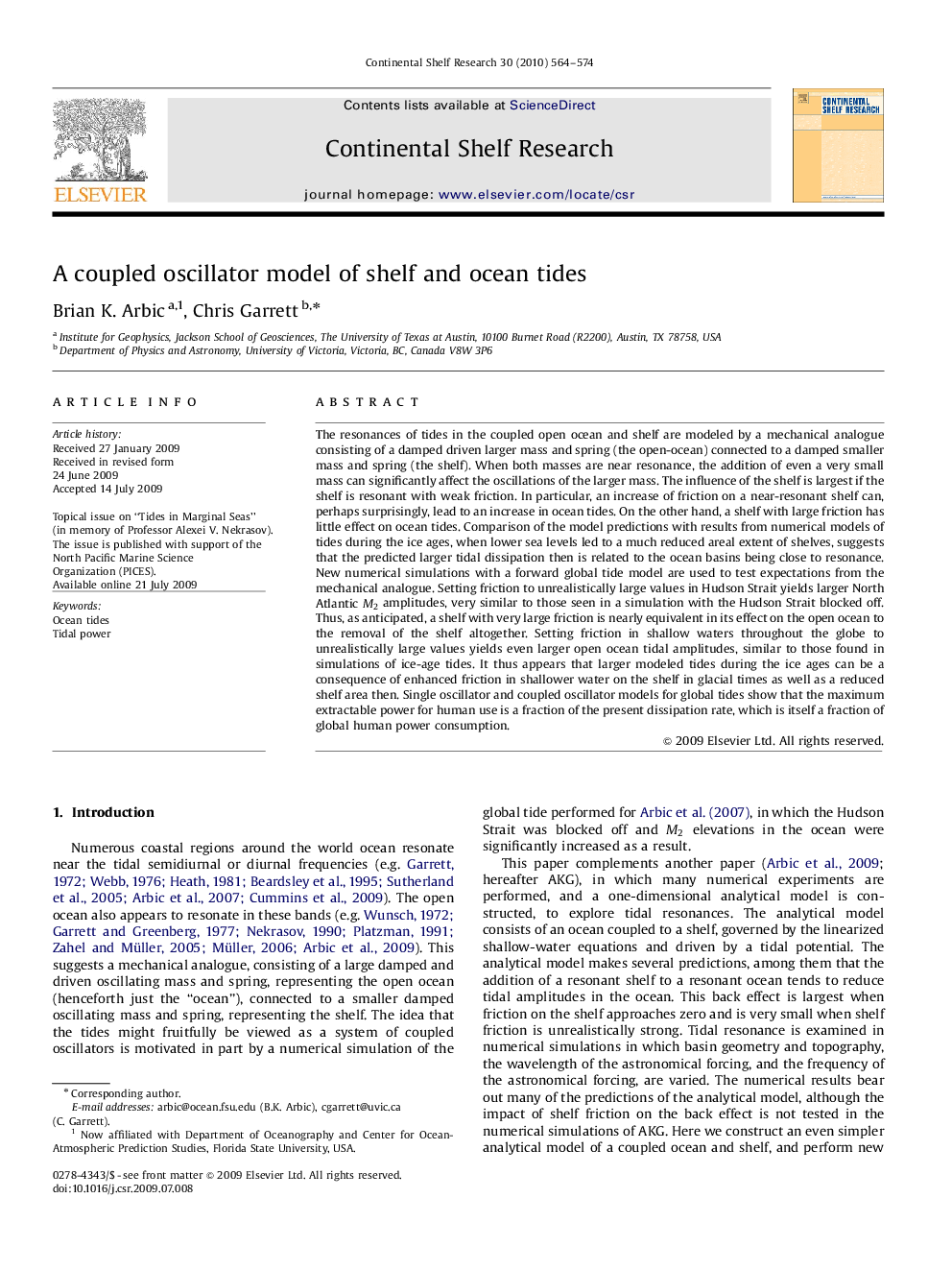| کد مقاله | کد نشریه | سال انتشار | مقاله انگلیسی | نسخه تمام متن |
|---|---|---|---|---|
| 4532952 | 1325159 | 2010 | 11 صفحه PDF | دانلود رایگان |

The resonances of tides in the coupled open ocean and shelf are modeled by a mechanical analogue consisting of a damped driven larger mass and spring (the open-ocean) connected to a damped smaller mass and spring (the shelf). When both masses are near resonance, the addition of even a very small mass can significantly affect the oscillations of the larger mass. The influence of the shelf is largest if the shelf is resonant with weak friction. In particular, an increase of friction on a near-resonant shelf can, perhaps surprisingly, lead to an increase in ocean tides. On the other hand, a shelf with large friction has little effect on ocean tides. Comparison of the model predictions with results from numerical models of tides during the ice ages, when lower sea levels led to a much reduced areal extent of shelves, suggests that the predicted larger tidal dissipation then is related to the ocean basins being close to resonance. New numerical simulations with a forward global tide model are used to test expectations from the mechanical analogue. Setting friction to unrealistically large values in Hudson Strait yields larger North Atlantic M2M2 amplitudes, very similar to those seen in a simulation with the Hudson Strait blocked off. Thus, as anticipated, a shelf with very large friction is nearly equivalent in its effect on the open ocean to the removal of the shelf altogether. Setting friction in shallow waters throughout the globe to unrealistically large values yields even larger open ocean tidal amplitudes, similar to those found in simulations of ice-age tides. It thus appears that larger modeled tides during the ice ages can be a consequence of enhanced friction in shallower water on the shelf in glacial times as well as a reduced shelf area then. Single oscillator and coupled oscillator models for global tides show that the maximum extractable power for human use is a fraction of the present dissipation rate, which is itself a fraction of global human power consumption.
Journal: Continental Shelf Research - Volume 30, Issue 6, 1 April 2010, Pages 564–574